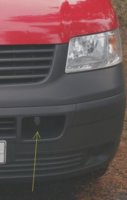Battery Charging - Main Battery Earth Point -
so weve all be told NOT to bridge out the battery monitor on the neg side of the battery when charging it.
This is so the ECM can correctly gauge the SOC (state of charge) of the starter battery by monitoring the current flow in and out of the battery . . . . even when the van is sleeping.
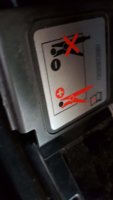
OK fine, no problem there . . . . . so my question to all is where are you picking up your chassis ground point? . . . . and one thats good enough to allow the 15amps charge that my charger is putting out?
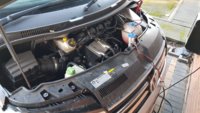
currently all i found was this small stud under the valence . . . . . but it seems a bit iffy . . . .
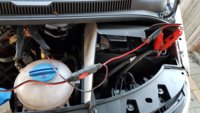
no i also this question as the manual clearly states that you must use a chassis or engine block ground . . . . . but where is one? nearly everything is plastic and my lead is to short to reach down to the block.
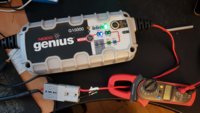
now as a comparison, our old BMW has the battery in the boot, it has a nice long chunky cable that runs along the under-body and up into the engine bay, to a nice convenient jump-point under a nice red plastic cover under the bonnet by the suspension turret . . . . . now right next to this point is a large chunky BOLT type thing bolted to the chassis for the purpose of a ground jump cable connection.
so has VW just not done anything about the NEG connection point?. . . . . or am i missing something?
why do you guys do?
EDIT: additional info,
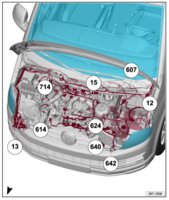
.
12 Earth point, on left in engine compartment
q Specified torque: 9 Nm
13 Earth point, on right in engine compartment
q Specified torque: 9 Nm
15 Earth point, on cylinder head
q Specified torque: 9 Nm
607 Earth point, on left in plenum chamber
q Specified torque: 9 Nm
614 Earth point 2, on right in engine compartment
q Specified torque: 20 Nm
624 Earth point, starter battery
q Specified torque: 20 Nm
640 Earth point 2, left in engine compartment
q Specified torque: 9 Nm
642 Earth point for electronically controlled fan
q Specified torque: 9 Nm
714 Earth point on right of engine
q Specified torque: 20 Nm
.
******************************************************
******************************************************
so weve all be told NOT to bridge out the battery monitor on the neg side of the battery when charging it.
This is so the ECM can correctly gauge the SOC (state of charge) of the starter battery by monitoring the current flow in and out of the battery . . . . even when the van is sleeping.

OK fine, no problem there . . . . . so my question to all is where are you picking up your chassis ground point? . . . . and one thats good enough to allow the 15amps charge that my charger is putting out?

currently all i found was this small stud under the valence . . . . . but it seems a bit iffy . . . .

no i also this question as the manual clearly states that you must use a chassis or engine block ground . . . . . but where is one? nearly everything is plastic and my lead is to short to reach down to the block.

now as a comparison, our old BMW has the battery in the boot, it has a nice long chunky cable that runs along the under-body and up into the engine bay, to a nice convenient jump-point under a nice red plastic cover under the bonnet by the suspension turret . . . . . now right next to this point is a large chunky BOLT type thing bolted to the chassis for the purpose of a ground jump cable connection.
so has VW just not done anything about the NEG connection point?. . . . . or am i missing something?
why do you guys do?
EDIT: additional info,

.
12 Earth point, on left in engine compartment
q Specified torque: 9 Nm
13 Earth point, on right in engine compartment
q Specified torque: 9 Nm
15 Earth point, on cylinder head
q Specified torque: 9 Nm
607 Earth point, on left in plenum chamber
q Specified torque: 9 Nm
614 Earth point 2, on right in engine compartment
q Specified torque: 20 Nm
624 Earth point, starter battery
q Specified torque: 20 Nm
640 Earth point 2, left in engine compartment
q Specified torque: 9 Nm
642 Earth point for electronically controlled fan
q Specified torque: 9 Nm
714 Earth point on right of engine
q Specified torque: 20 Nm
.
******************************************************
******************************************************
Last edited:

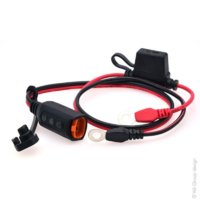
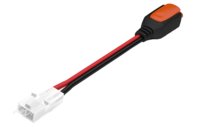
![Andrerson_SB50_120A_double_pole_power_connector_red_16mm2_cable_1[2].jpg Andrerson_SB50_120A_double_pole_power_connector_red_16mm2_cable_1[2].jpg](https://www.t6forum.com/data/attachments/34/34404-270f2e52c25ed34a77aaffcce9ccf7c2.jpg)
